Bounthone Kongphongma knows family planning arrived too late for his generation in rural Laos. The former military medic and his wife had 14 children, the youngest of whom they raised during the country’s secret war, often escaping to the jungle on the outskirts of their village to avoid airstrikes. Only eight of his children survived to adulthood, and those who died were not victims of war, but of what Kongphongma thinks was malaria.
“It was hard for us to raise a large family and we were poor,” he says. “This [family planning] project came too late for us, but not for our children.”
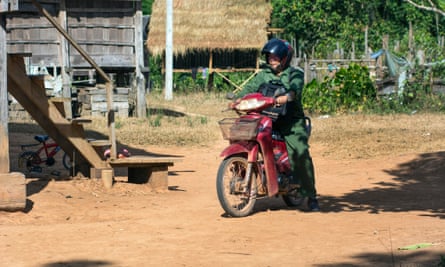
Kongphongma has advised his four daughters to space their pregnancies, as he has all the young people he counsels in Lao Luang, in the Vilabouly district of southern Laos. He is a voluntary community-based distribution (CBD) worker, trained by the Laotian government and the UN population fund (UNFPA) to spread the word about family planning and distribute free contraceptives in his community. Kongphongma considers this his national duty. “Contraception, or we can say family planning, can help reduce poverty in our country,” he says.
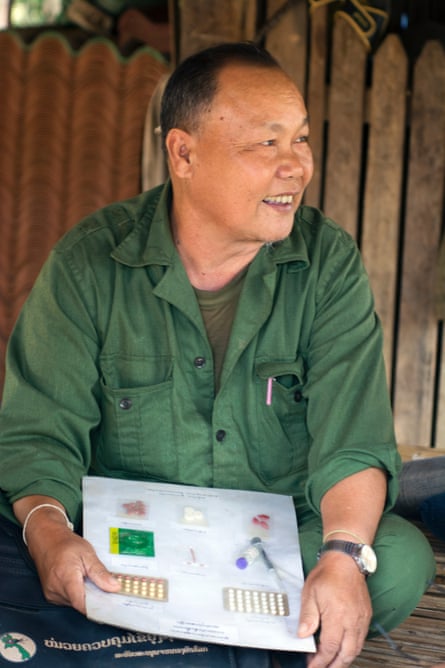
While CBD workers like Kongphongma are proving critical in reaching remote and mountainous areas once cut off from family planning services, there is an important element missing – women. According to a Laos government spokesperson, of the 74 CBD workers in four provinces of the country, only one is a woman.
Dr Kobkeo Souphanthong, deputy director of the government’s maternal and child health clinic in the capital Vientiane, says it is hard to recruit women. “In these remote areas, the villages are hard to reach. It takes six or seven hours for them just to reach a village, and they spend many days away from their family,” Souphanthong says. “Also, in some of the rural areas women are still dominated by men, and the women are told they should stay at home.” Despite the government’s admission that too few women have been engaged as CBD workers, it has no strategy for their recruitment.
UNFPA Laos deputy representative Rizvina de Alwis says more must be done to actively recruit women as family planning workers. “I think it’s very important, particularly since we are talking about something that is very sensitive and very personal for some women to talk about, and they don’t necessarily want to discuss it with men,” de Alwis says.
“We do, however, have many women working as midwives. And one of the difficulties we face in recruiting women as CBD workers has to do with the attitudes that still exist, where women might not see a role outside their homes, so it adds to the barriers that they have in becoming a volunteer.”
With support from UNFPA, the country has trained 1,500 midwives since 2008, most of them women, but the majority work in health centres in provincial capitals. This means women can speak to female health workers when they are pregnant, but may not get the same opportunity when they are planning to avoid or delay pregnancy.
De Alwis says despite the lack of women working as CBD workers, the programme has helped to increase contraceptive rates and demand for the services is increasing. “It’s not a perfect programme but it is definitely filling a gap, because CBD workers are the only ones reaching these remote villages where no one can access the health centres because they’re too far away, and these are villages where women have to walk for days to get to a health centre.”
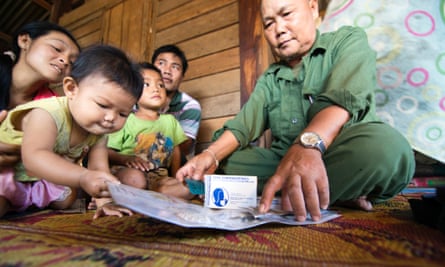
One woman, who lives in the same village as Kongphongma but did not want to be named, says having a CBD worker in the community meant she was able to choose when to have children. “The worker comes to me and my husband and we talk about this together,” she says.
The woman, 27, says she is unable to travel to a health centre to collect contraceptives because she is busy looking after her three children and two nieces. “This is the only way I can collect the pill, because the centre is more than two hours away. Maybe I would like to go so I can speak to a woman, but I am happy we get to have these contraceptives so speaking to a man is good too.”
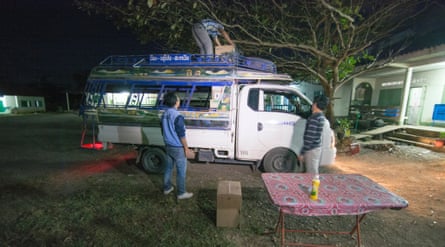
In Laos, where about 70% of the population live in rural and remote areas, CBD workers are a critical element of the country’s plan to provide contraceptives to all who need them. Currently, 48% of married women do not use a method of family planning, and at least 20% of women would like to delay or avoid pregnancy but do not have access to contraceptives.
Health workers agree that the next step is to see more women not only receiving family planning advice, but giving it too. “It is a service that we have to provide, and we have male CBDs providing this service, but I do believe we need to recruit more women – that will make this programme even more effective,” de Alwis says.

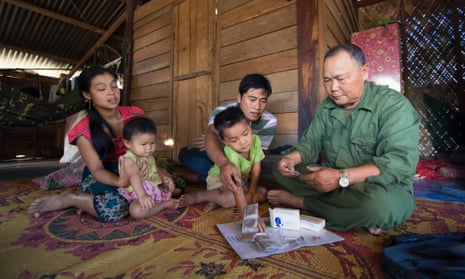
Comments (…)
Sign in or create your Guardian account to join the discussion